Popular search
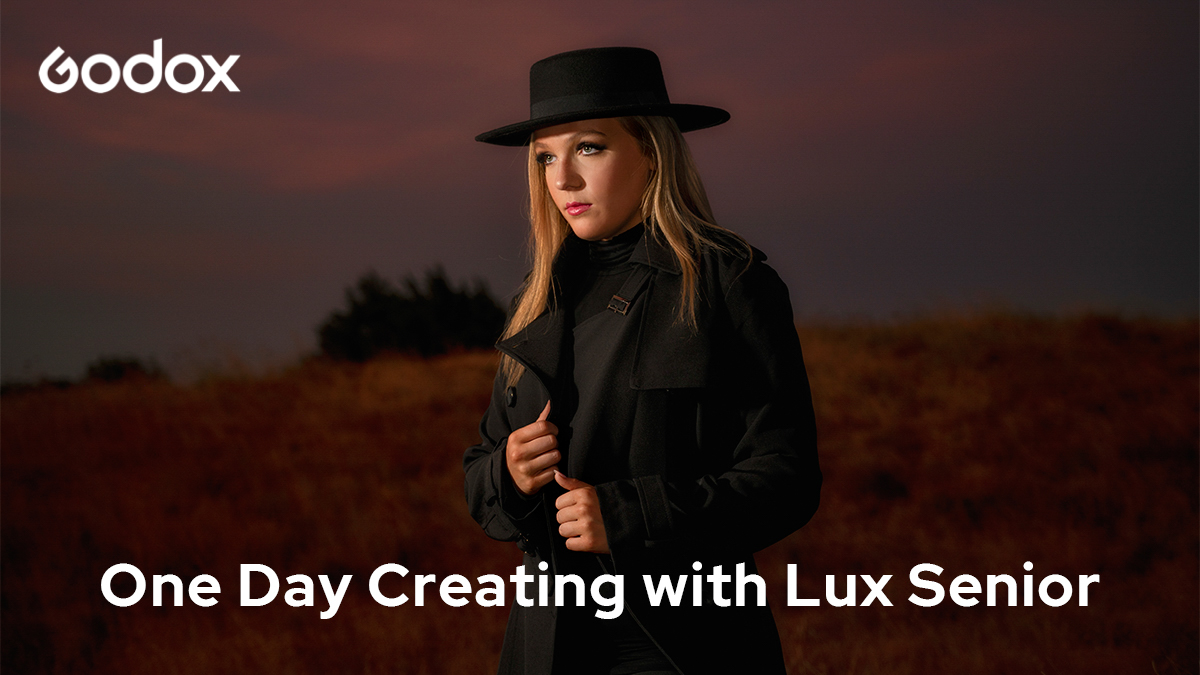
To explore all the possibilities of the Lux Senior, the master photographer and educator David & Luke Edmonson created this group of photographs including 11 different scenarios showcasing various lighting techniques you may employ in your creating.
For this entire series, they use the same model and build around the concept of shooting a high school senior's pictures using the Lux Senior retro flash. And the shots span the course of a day, from sunrise to after sunset both outdoors and indoors.
Let’s join their one-day trip of exploring the versatile shooting scenarios with two Lux Seniors.
Scenario 1
The purpose of this photo is to show what shooting at dawn or dusk might look like with the Lux Senior mounted directly to your camera. The tripod is approximately 5 feet from our model, set to ISO 125, f7.1 at 1/200s using a 35 mm lens, and the flash is at full power. The timing and location is a lakeside dock at sunrise.
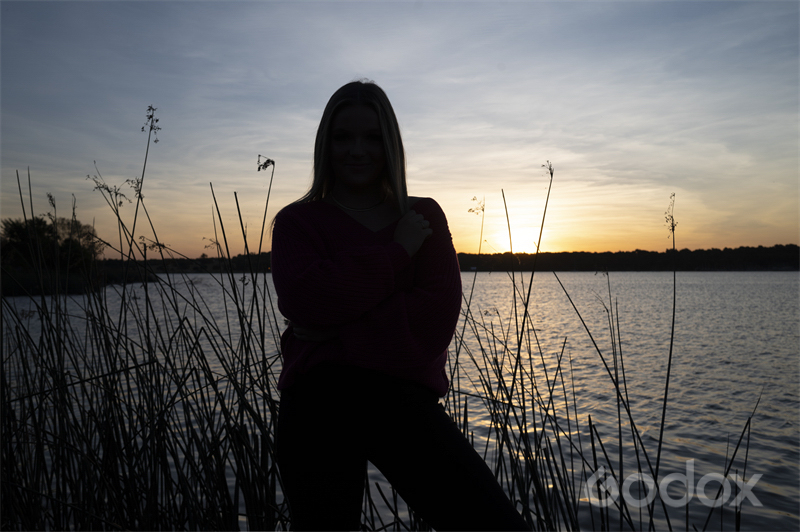
Without flash

Lux Senior at full power
Scenario 2
This picture uses the Lux Senior on a camera bracket allowing the camera to rotate vertically. Shadows fall more naturally behind your subject when positioning the flash over the lens than in a sideways orientation, where the shadows appear more to the left or right of your subject. This solution also benefits anyone with a mirrorless camera that does not include a flash sync terminal. The X-Pro trigger is connected to the Lux Senior using a 2.5mm cable (including a reducer from 3.5mm to 2.5mm male on both sides.) Under the trigger menu settings, change the Sync status from In to Out. This step pushes the signal out to the flash so it will fire. Our camera is roughly 4 feet from our model (handheld), set to ISO 80, f8 at 1/200s using a 35mm lens, and the flash is at 1/2 power.
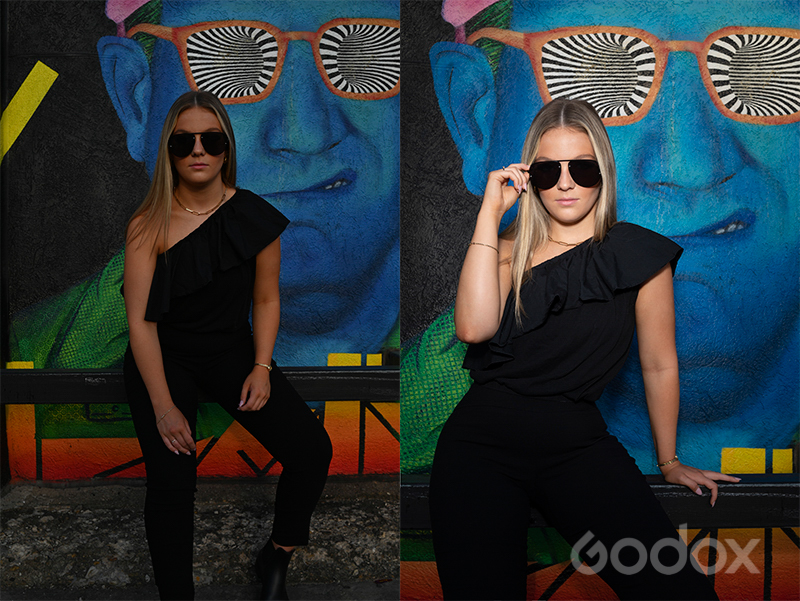
Without flash Lux Senior at 1/2 power
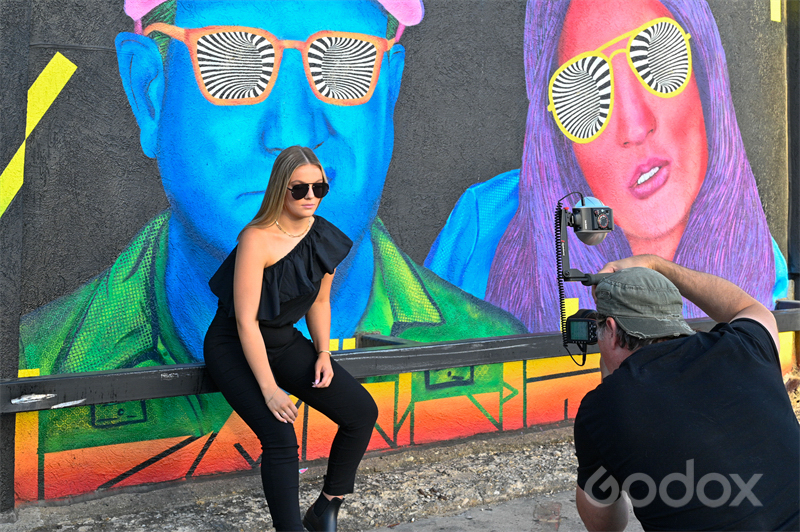
Behind the scene
Scenario 3
For this example, we wanted to mix the Lux Senior with naturally occurring light patterns on a white wall underneath a bridge overpass. Our flash (at full power) is about 5 feet from the model. Camera settings are ISO 100, f7.1 at 1/250s using a 50mm lens.
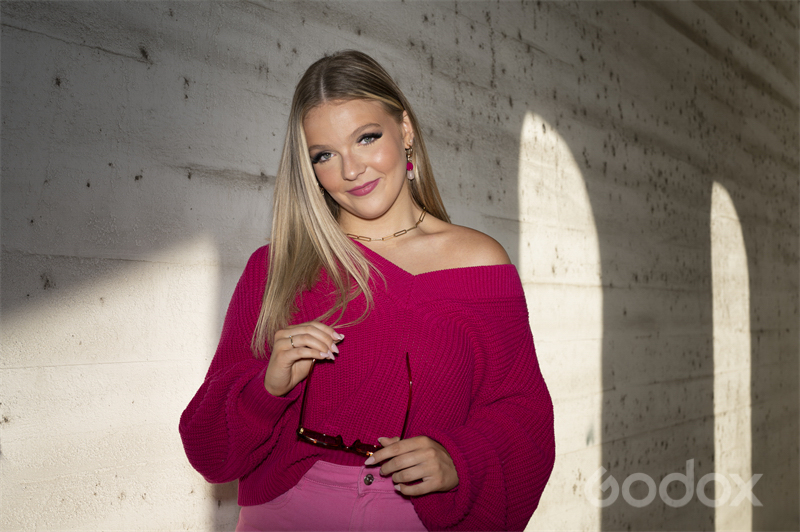
Lux Senior at full power
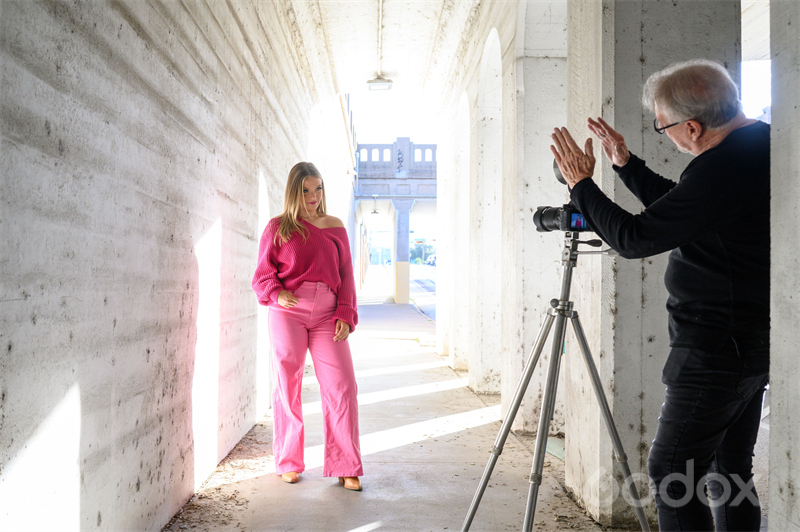
Behind the scene
Scenario 4
This scenario tests some outer limits for using the Lux Senior in terms of distance and the sensitivity of the optical flash as a secondary light source. The model stands two car lanes away, a ballpark of 20 feet. To be in a dim enough area, we've more towards the middle of the overpass with our primary Lux Senior flash mounted to the camera and set to full power. The second flash is handheld roughly 30ft from the camera behind the model, in S1 mode set to 1/16th power.
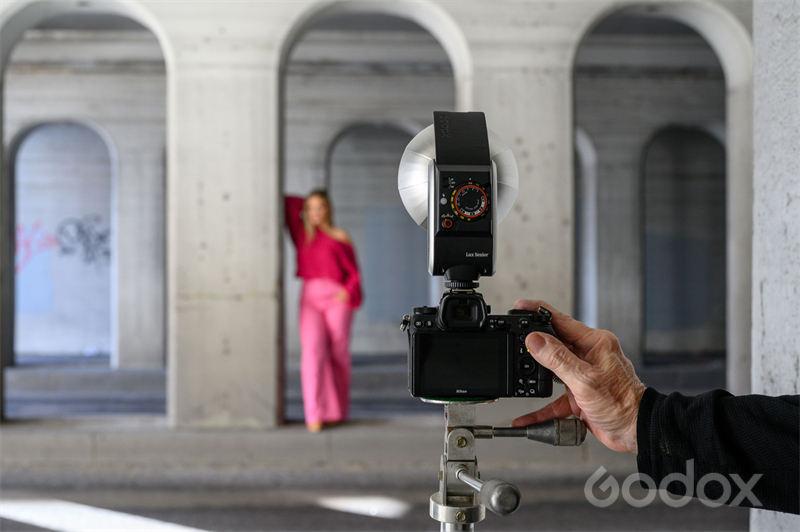
The primary Lux Senior at full power
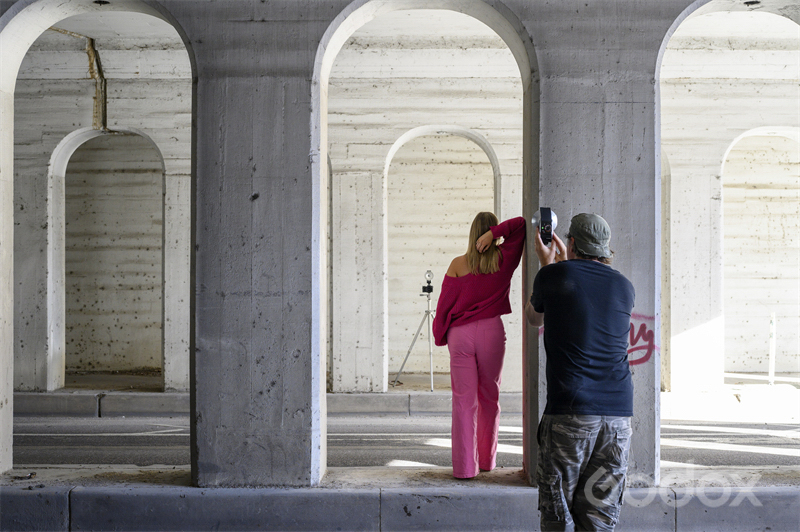
The second Lux Senior at 1/16 power
Due to the nature of an optical signal, it was not necessary to have the flash behind the model directly in the line of sight. There was enough bounce light to make the connection successfully. However, when using optical triggering outdoors, it is necessary not to have direct sunlight or too much ambient light. Because of the subject's distance to the light source, you can also get a sense of the shape of the light pattern and the natural vignetting that occurs. The camera settings are ISO 400, f5.6 at 1/250s using a 35mm lens.
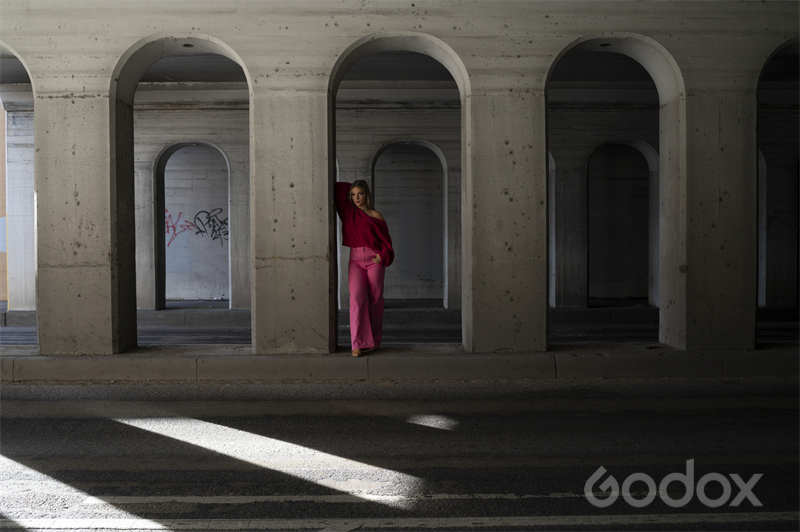
Without flash
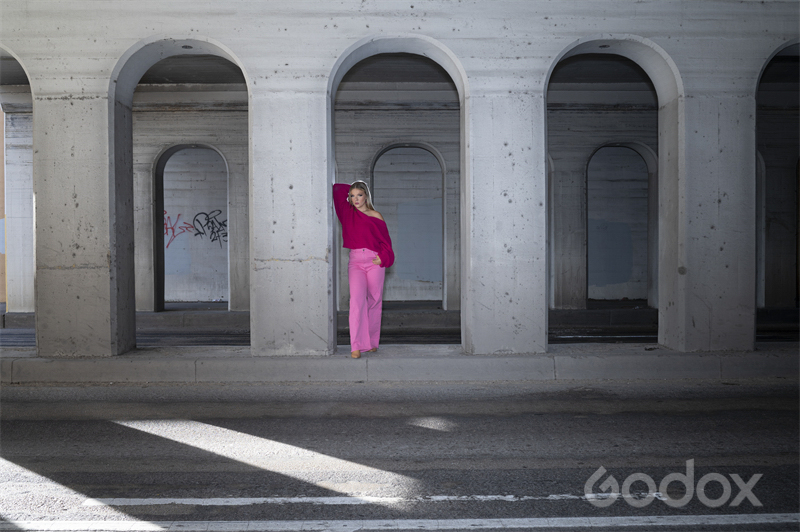
With two Lux Senior
Scenario 5
Another example of using the optical flash outdoors to trigger a second Lux Senior is this shot against a patterned diamond wall. The result creates a bit of a highlight behind her and a shadow in front. The main flash is on camera set to 1/8th power about 6 feet away, with the 2nd one set to 1/16th power in S1 mode behind the subject and aimed at the wall. It is handheld approximately 8 feet away. The shot uses a 24-70mm lens set to 38mm at ISO 400, f5.6, 1/250s.
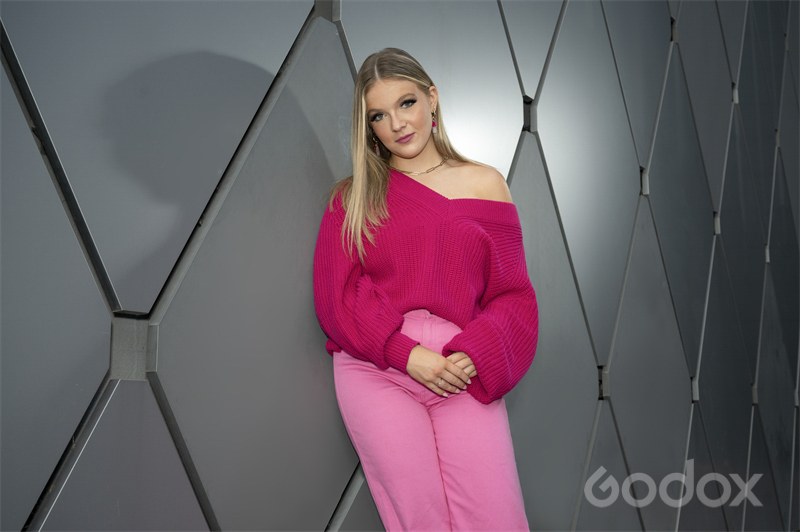
With two Lux Seniors, main flash at 1/8 power and 2nd flash at 1/16 power
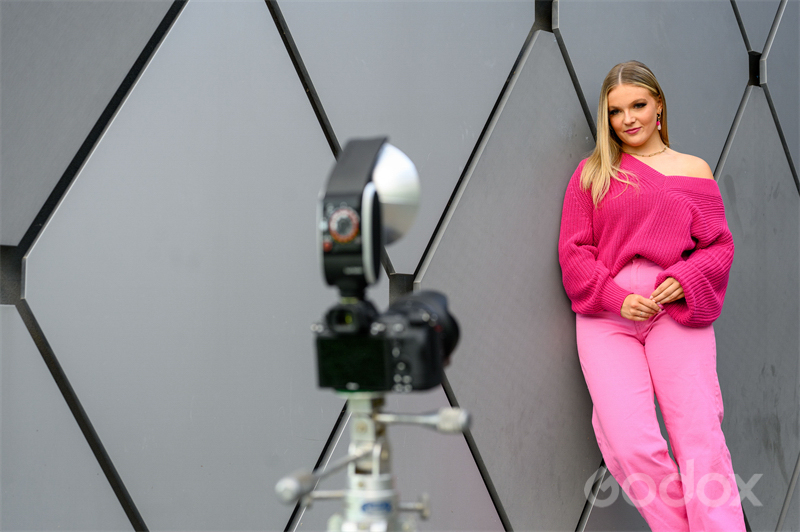
Behind the scene
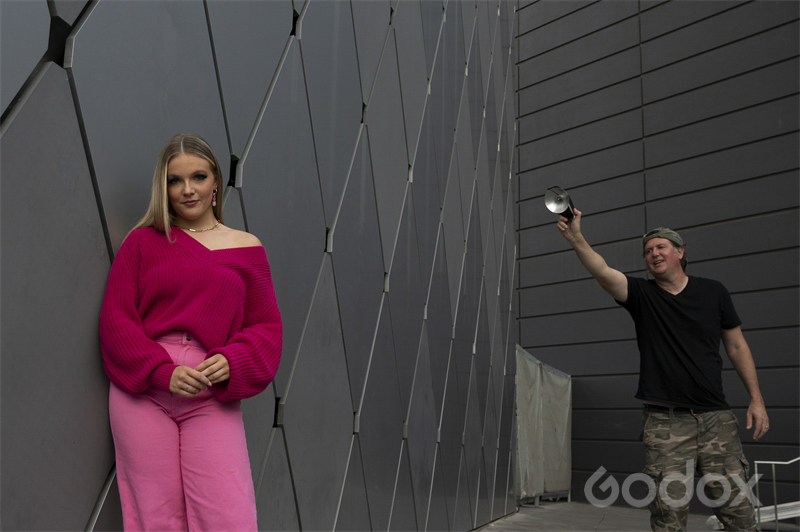
Behind the scene
Scenario 6
We've moved into a studio setting against a pink wall for this picture. Diffused natural light is coming through some windows to the model's right. However, the camera's exposure makes the Lux Senior our dominant light source. The shot uses a 24-70mm lens set to 54mm at ISO 100, f5.6, 1/250s, while the flash is at 1/8th power at a distance of 10 feet.
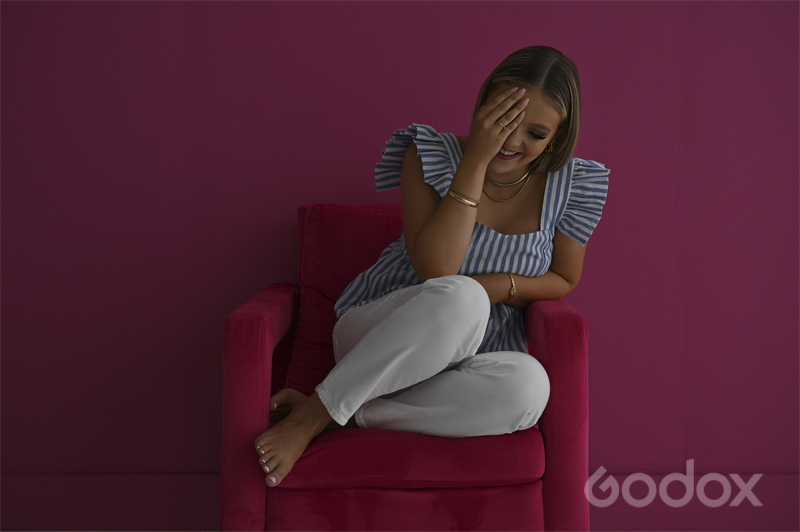
Without flash
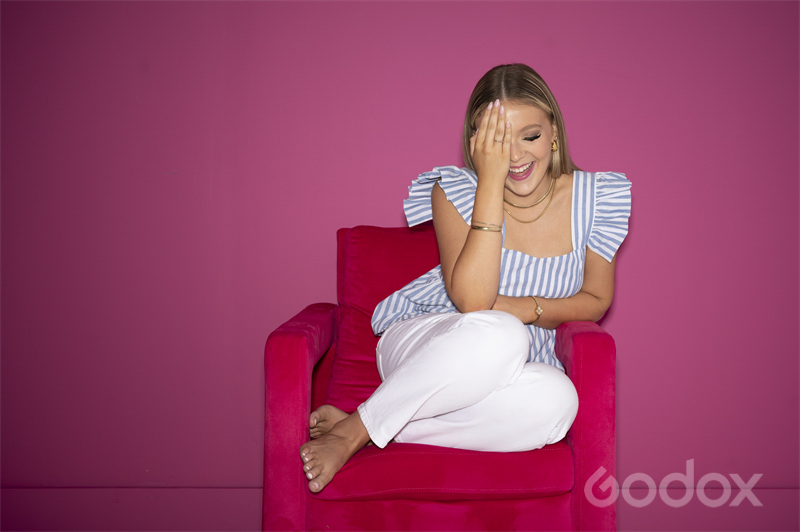
One Lux Senior, at 1/8 power
Scenario 7
By using the optical trigger indoors, we can use an on-camera Lux Senior as the fill light while hand holding a second one as the main flash. Camera settings are ISO 100, f4, 1/250s using a 24-70mm lens at 60mm. The flash in the hot-shoe is set to 1/64 power, while the one to the model's right is at 1/16th. As a proof of concept, we experimented using the flash with no modifier vs. white plastic grocery bags or standard diffusion material over the silver reflector to modify the light. What you see here is the latter which reduced the intensity of the light by roughly a stop compared to the bare flash at the distance of 3 ft from the subject. It's an easy DIY modification should you ever want to try it. The main tip is not to cover the optical slave sensor with your hand or material.
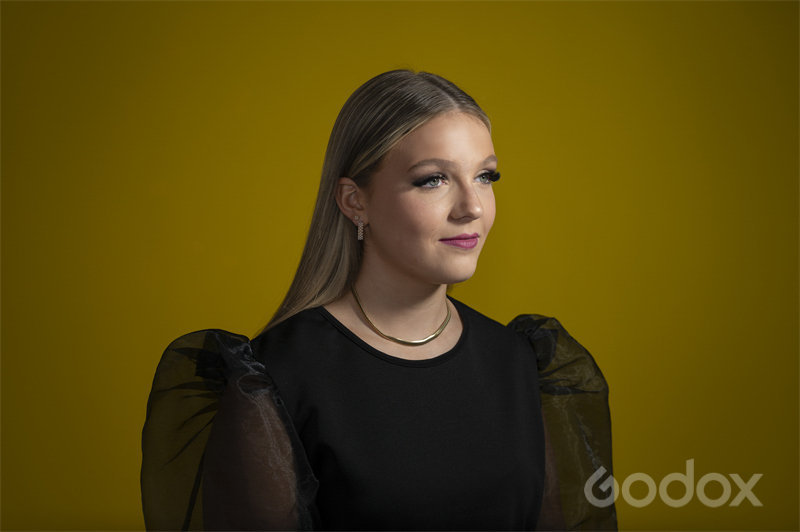
Two Lux Seniors, the on-camera flash at 1/64 power and the flash on the left of the model at 1/16 power
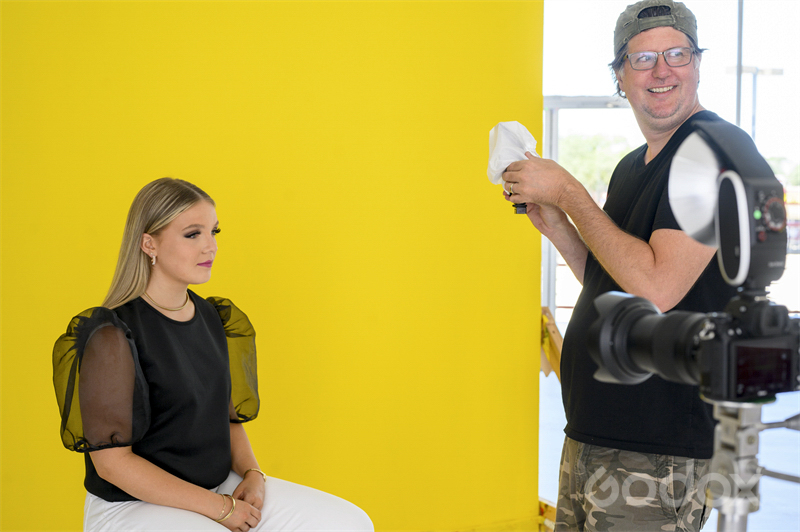
Behind the scene
Another proof of concept was to use the second Lux Senior above the model as a hair light reduced to 1/16th power and held roughly 5 feet from the subject. While the camera's exposure remained the same, the on-camera flash increased to 1/4 power as the primary light source.
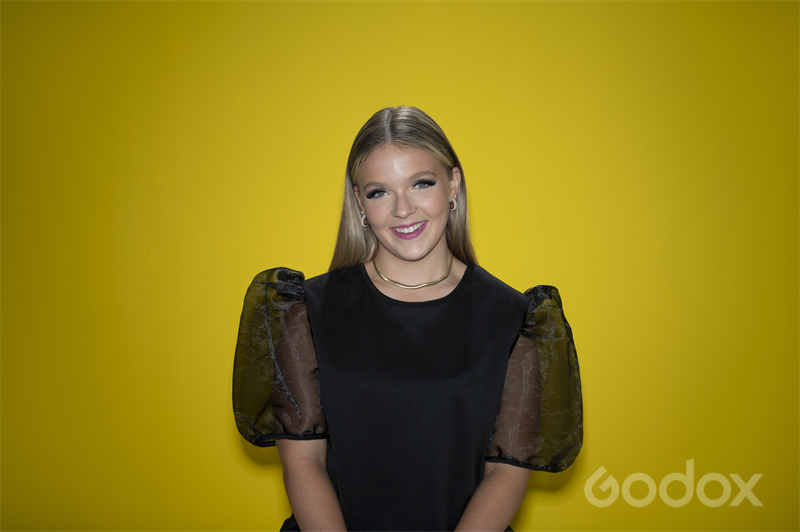
Two Lux Seniors, the main flash at 1/4 power and the flash as hair light at 1/16 power
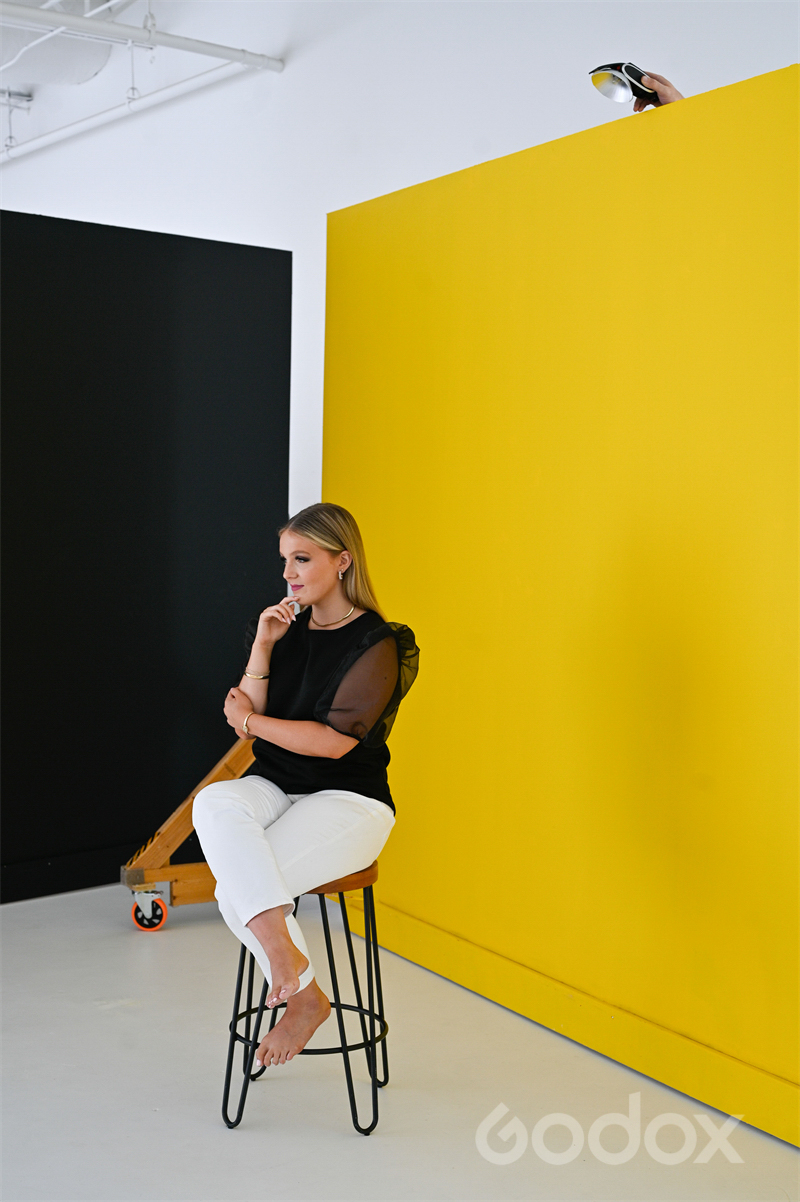
Behind the scene
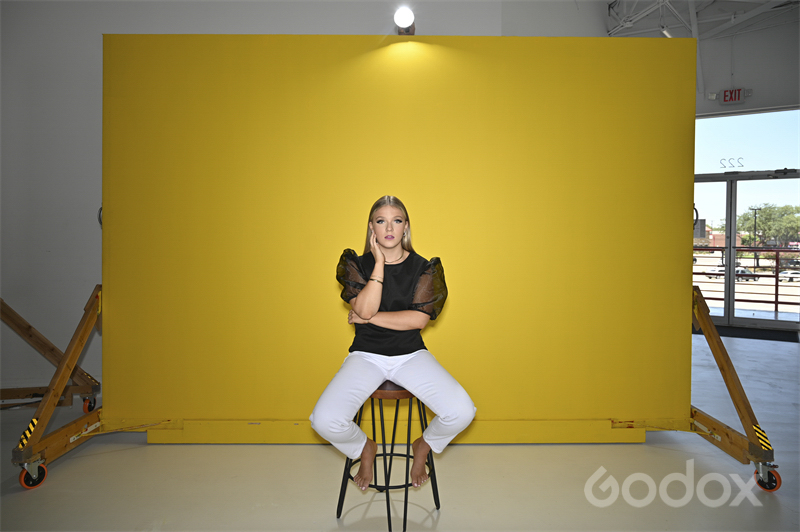
Behind the scene
Scenario 8
One natural question around the Lux Senior might be how it looks up close for a headshot or beauty shot as more of a fill-flash and to create some catchlights. The flash is at 1/4 power in the tighter photo with the camera set to ISO 100, f4.5, at 1/125s using an 85mm lens. We then doubled our distance by backing up to about 10 ft away and increased the power to 1/2, showing more of her torso.

One Lux Senior at 1/4 power
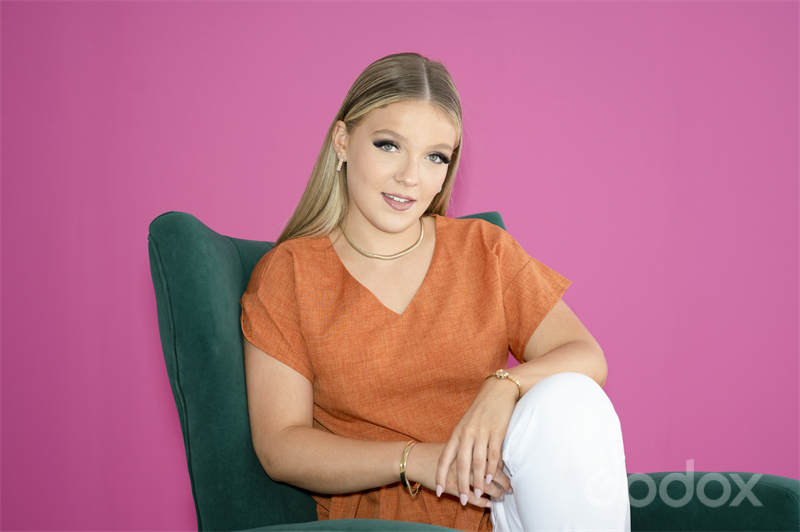
One Lux Senior at 1/2 power
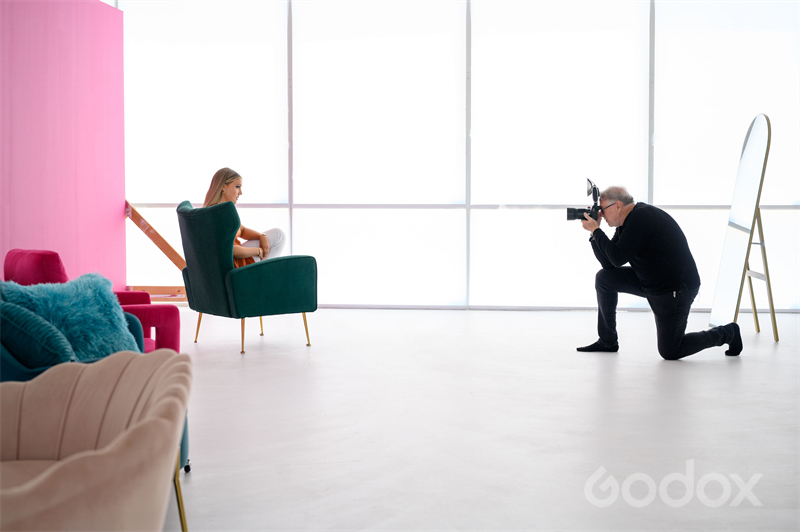
Behind the scene
Scenario 9
In this scenario, the Lux Senior serves as the fill flash for our model as the sun is the primary light source for the scene. Because we are approaching sunset and our working distance from the model, the flash is at full power. The camera is roughly 12 ft away, and the settings are ISO 100, f7.1 at 1/250s using a 24-70mm lens set to 55mm. We pushed the flash to its outer limits in terms of power and needed to place our model in the shadows naturally coming from the trees. Alternatively, we could have waited even longer for the intensity of the sunlight to decrease. And, yes, we chose a more artistic edit for this sample because the subject matter lent itself to it.
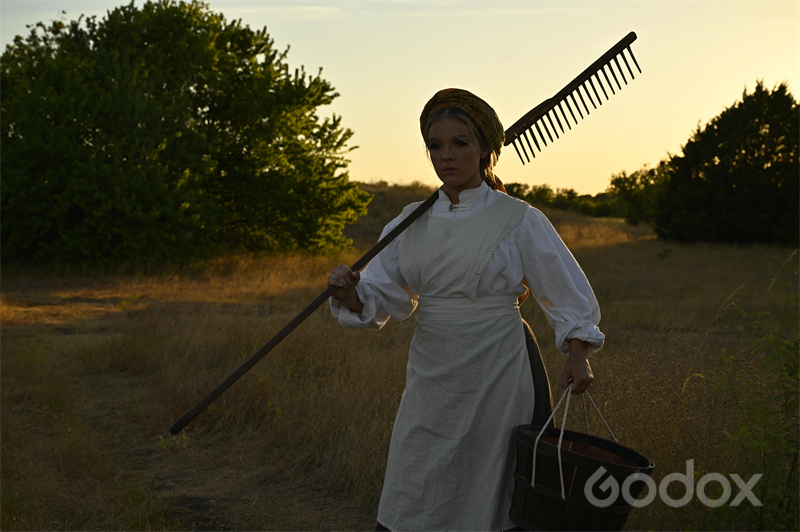
Without flash
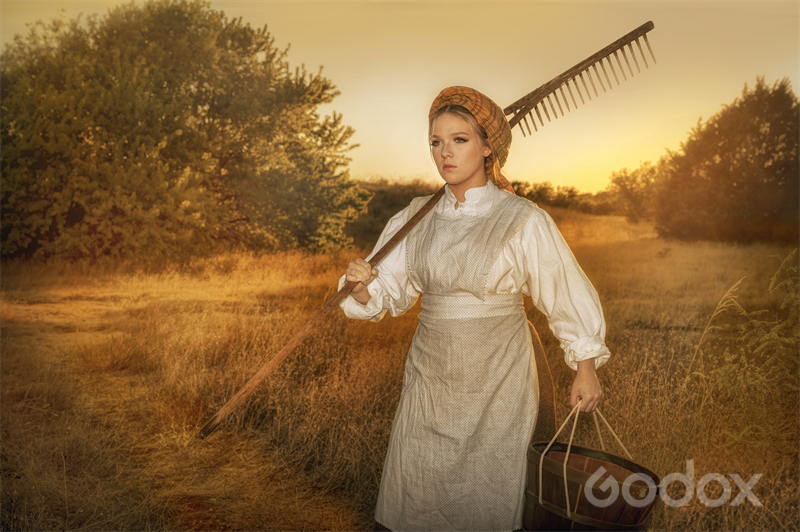
One Lux Senior at full power as the fill flash

Behind the scene
Scenario 10
As the sun continued to set rapidly, we used it as a back/hair light. We moved our camera closer to the model, roughly 6 ft away, with the Lux Senior set to 1/2 power. The concept played off the standard high school senior shots representing their athletic interests or activities. This photo uses a 24-70mm lens set to 52mm at ISO 50, f4, 1/250s.
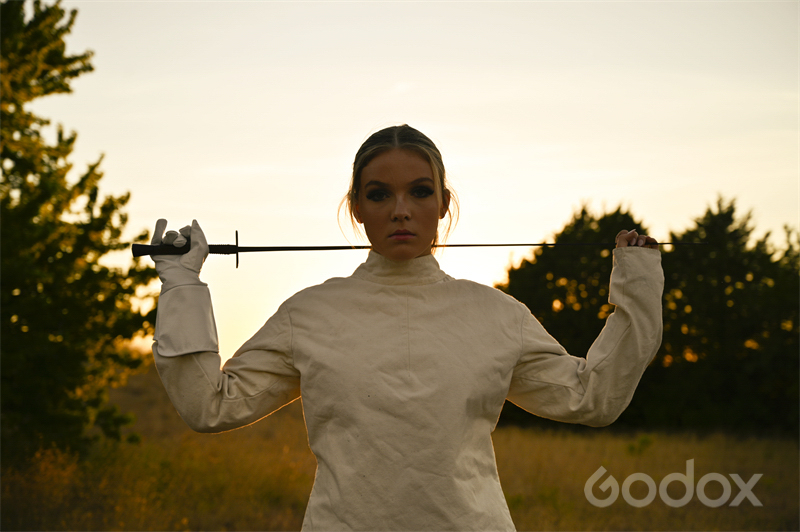
Without flash
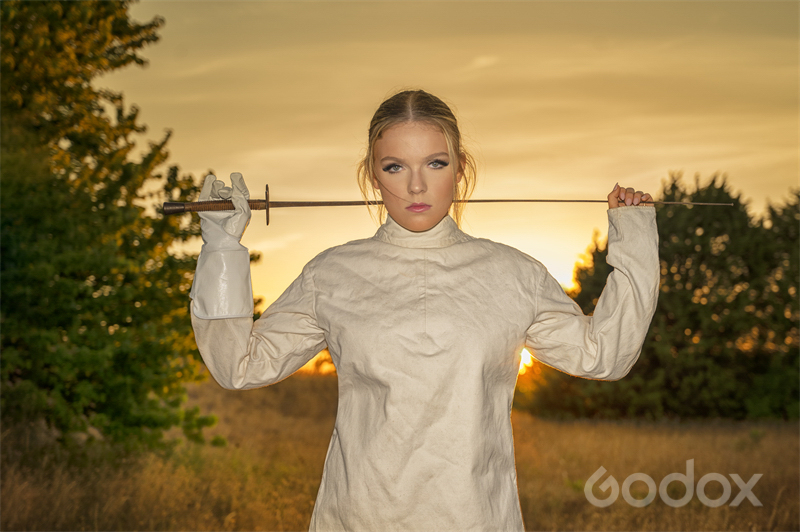
One Lux Senior at 1/2 power
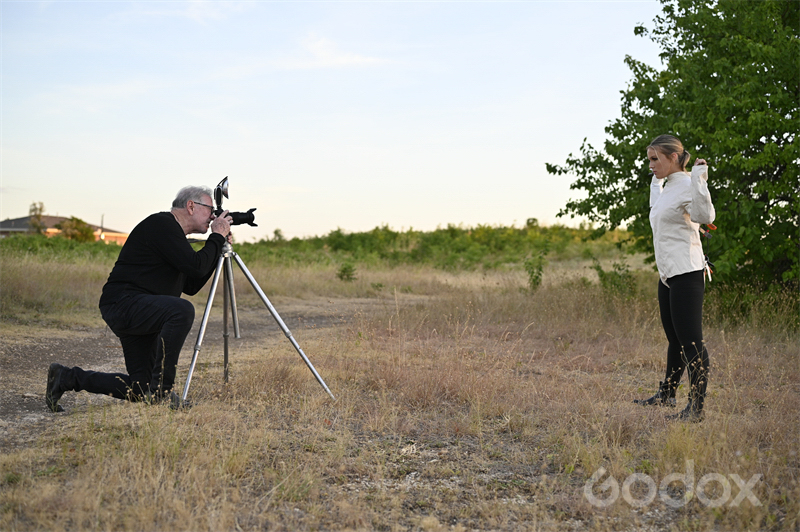
Behind the scene
Scenario 11
For our final shot, we waited until the sun had set (twilight) to use the optical slave trigger approach outdoors. The camera's settings are ISO 100, f4.5, 1/125s using a 24-70mm lens set to 59mm on a tripod roughly 8ft from the model. The handheld flash is about 4 ft to the model's left, set to 1/4 power, and diffused. The on-camera fill-flash is at 1/32, bringing some detail into her outfit's black fabric and triggering the main. The “before” photo illustrates the exposure with only the on-camera fill-flash firing, helping you see what the handheld flash contributes to the final picture.

One Lux Senior at 1/32 as fill flash
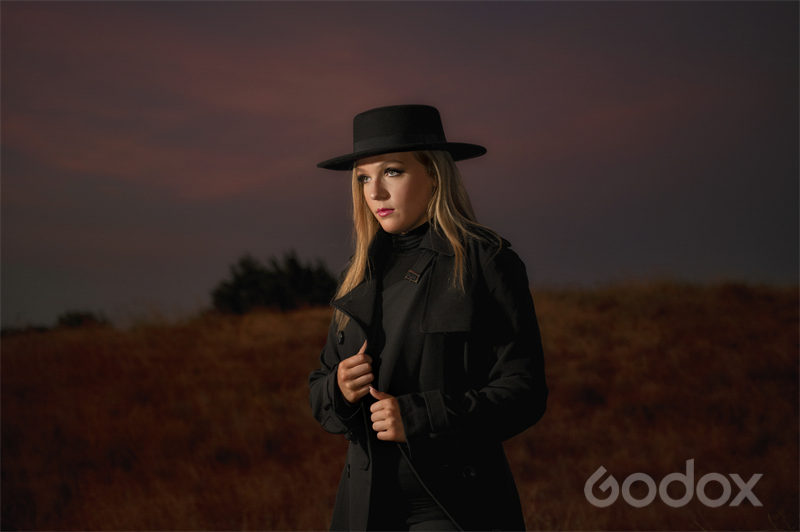
Two Lux Seniors, the handheld flash is at 1/4 and diffused and the on-camera fill-flash at 1/32

Behind the scene
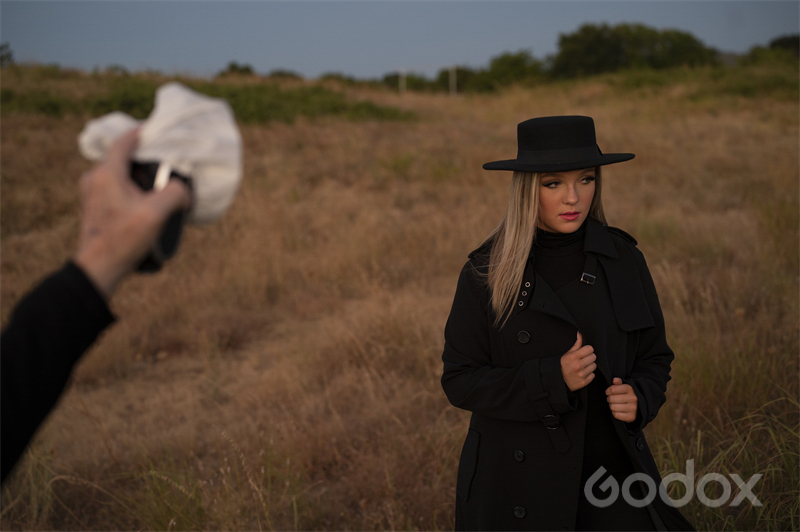
Behind the scene
This is just the beginning. You can create more with Lux Senior.